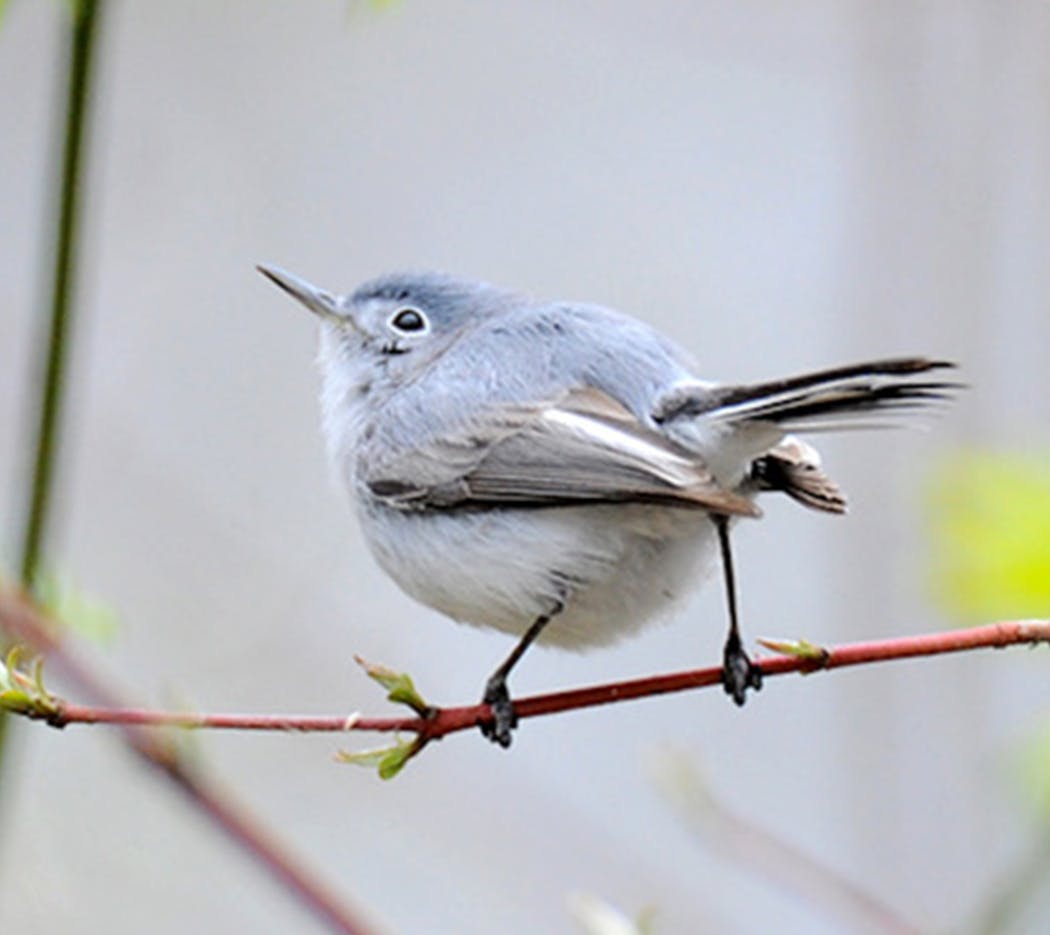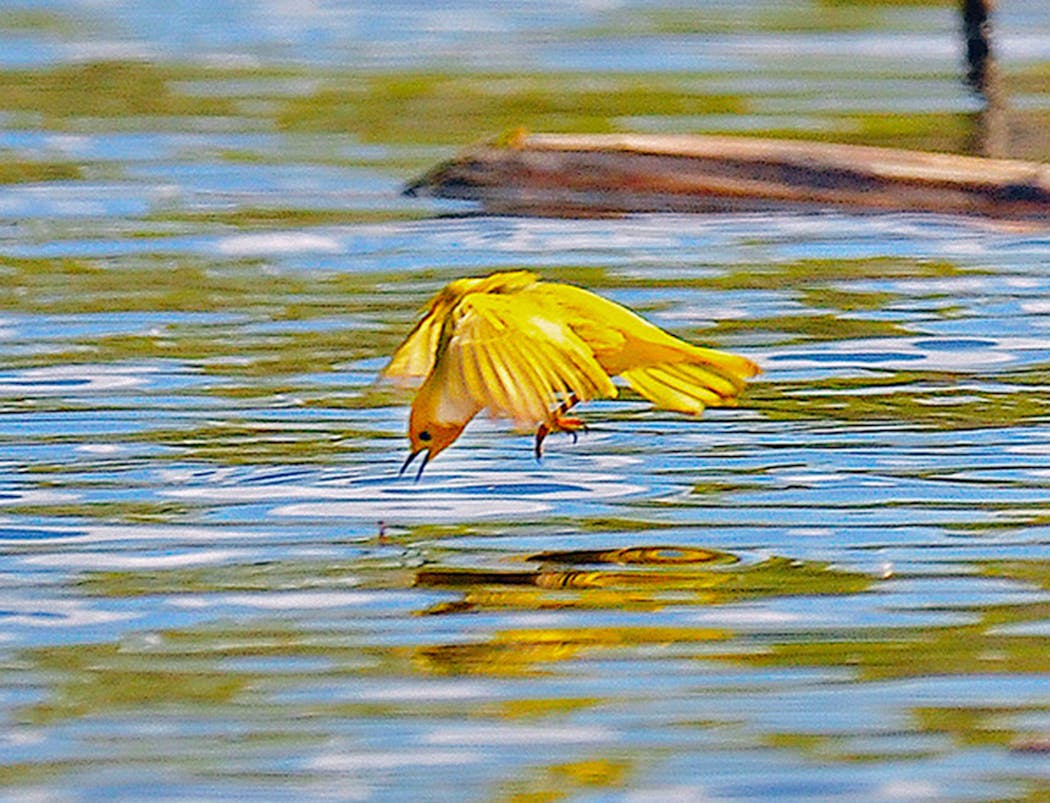You don't have to be a birder to enjoy the spectacle of spring migration. All you need is a willingness to stop, look and listen.
If you do, your reward will likely be a fresh awareness of the astonishing movement of birds all around us.
You might see a yellow-bellied sapsucker that spent the winter in Texas or purple martins that traveled up from Brazil. That indigo bunting calling from the woods might have flown up from Belize. Those tiny ruby-throated hummingbirds? They flew from Mexico or farther south. Barn swallows sweep in from Colombia. Green herons trade the Caribbean for Minnesota.
But travelers from South America, Central America and the American South don't fly in large flocks or land en masse in local trees.
During spring migration, there may be a trickle of birds some days, more other days. There might even be a day when it seems as if the skies are full of birds, although those days are increasingly rare.
Of course, you won't see them if you don't look. So let this be the spring that you take the tine to notice the colorful, fleeting migrant birds that pass briefly through our state.
All around us
Birding can be hard work, requiring skill, patience and sometimes travel to see birds. But in May, there are hundreds of millions of birds heading north. Plenty of them will stop in the metro area, maybe in a neighborhood park or even your backyard.
"They pass over every square mile of land and water in the temperate regions of North America," said Kenn Kaufman, noted writer, naturalist and artist. "A few of them will stop in just about every tree on this continent, so no matter where you are, you have a chance to see some migrating songbirds."
Buy or borrow a field guide from the public library or download an identification app. You may want to outfit yourself with a pair of binoculars to bring the birds in close so you can detect marks, patterns and subtle shadings.
With or without binoculars, start looking into tree canopies, shrubbery and at the ground. You'll likely be astonished at how many different species you can spot.
Enjoy the 'rush hour'
For many bird species, migration starts in early April. The real "rush hour" takes place from late April into early June. The peak of migration is right now, in mid-May.
For the next two weeks, check out a neighborhood park, take a walk along a river or find a pathway beside some woods.
Keep your eyes open for a flash of movement. Morning is the best time to look for birds in spring migration, because the birds that have been flying all night will be dropping down to feed and rest for the day.
Be guided by curiosity
Instead of trying to look for specific species, "let your curiosity guide you," said Kristin Hall, who coordinates nongame wildlife projects for the Minnesota Department of Natural Resources. "And don't get hung up on identification, just be open and curious about getting to share a brief moment in a bird's day."
Hall recommends that you let yourself enjoy looking at birds rather then trying hard to be a birder.
"Birds are fun to watch, in the way they hop, move, call and interact," she said. "Before you know it, you'll see patterns emerging and find yourself wondering what they're doing, what they're eating, who is that other bird they're with and why does it look different?
"As those questions pile up, you'll find yourself seeking answers and there you have it — you're birding!"
There are few rules for bird-watching; the point is to be outdoors (or indoors at a window), delighting in whatever birds pass by.
That said, be sure not to interfere in any way with birds going about their daily lives. Don't play tapes of bird calls, and don't approach too closely. Instead, just stand back and admire.
Family fun
Watching for birds is a perfect activity for kids, who tend to have a natural curiosity about other small, active creatures. Because most kids like to put names to the things they say, a field guide is a big help when bird-watching with kids.
Spring is an intense time for birds — and for bird-watchers. There's a flurry of activity compressed into a few short weeks. To enjoy one of the most awe-inspiring events the natural world has to offer, all you have to do is head outside.
St. Paul resident Val Cunningham, who volunteers with the St. Paul Audubon Society and writes about nature for local, regional and national newspapers and magazines, can be reached at valwrites@comcast.net.
Migrants at feeders
Many migrating birds are insect-eaters and don't visit bird feeders. Here are some that do:
Rose-breasted grosbeaks: Big fans of safflower seed.
Baltimore orioles: Enticed by grape jelly and orange pieces.
Ruby-throated hummingbirds: Eager for sugar water.
Indigo buntings: Black-oil sunflower seeds are a hit.
Gray catbirds: Grape jelly fans.
How you can help birds
Keep cats indoors.
Plant native plants.
Avoid using pesticides.
Make windows bird-friendly with decals or patterns.
Provide a birdbath.
Drink shade-grown coffee.
Good places to see migrating birds
Bloomington: Minnesota Valley National Wildlife Refuge, Old Cedar Avenue Bridge, Richardson Nature Center.
Brooklyn Center: Palmer Lake Environmental Nature Area.
Brooklyn Park: Mississippi Gateway Regional Park.
Fridley: Springbrook Nature Center.
Hastings: Carpenter Nature Center.
Maplewood: Maplewood Nature Center.
Minneapolis: Minnehaha Park, North Mississippi Regional Park, Roberts Bird Sanctuary, Theodore Wirth Park.
Richfield: Wood Lake Nature Center.
Roseville: Harriet Alexander Nature Center.
St. Anthony: Silverwood Park.
St. Louis Park: Westwood Hills Nature Center.
St. Paul: Crosby Farm Regional Park, Lilydale Regional Park, Phalen Regional Park.
Shoreview: Grass Lake Nature Preserve.
West St. Paul: Dodge Nature Center.
White Bear Township: Tamarack Nature Center.
Get more info
Sign up for Explore Minnesota's monthly birding e-newsletter at exploreminnesota.com/info/ minnesota-newsletters.
Olympian Kristi Yamaguchi is 'tickled pink' to inspire a Barbie doll

After 4 decades in music and major vocal surgery, Jon Bon Jovi is optimistic and still rocking
Rom-com author Emily Henry knows the secret to having a healthy relationship with love





